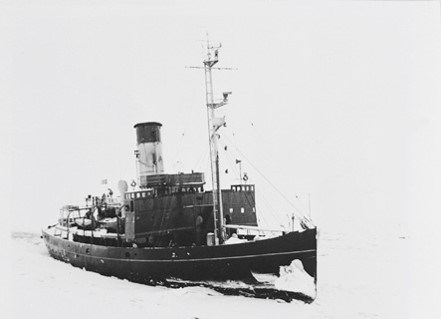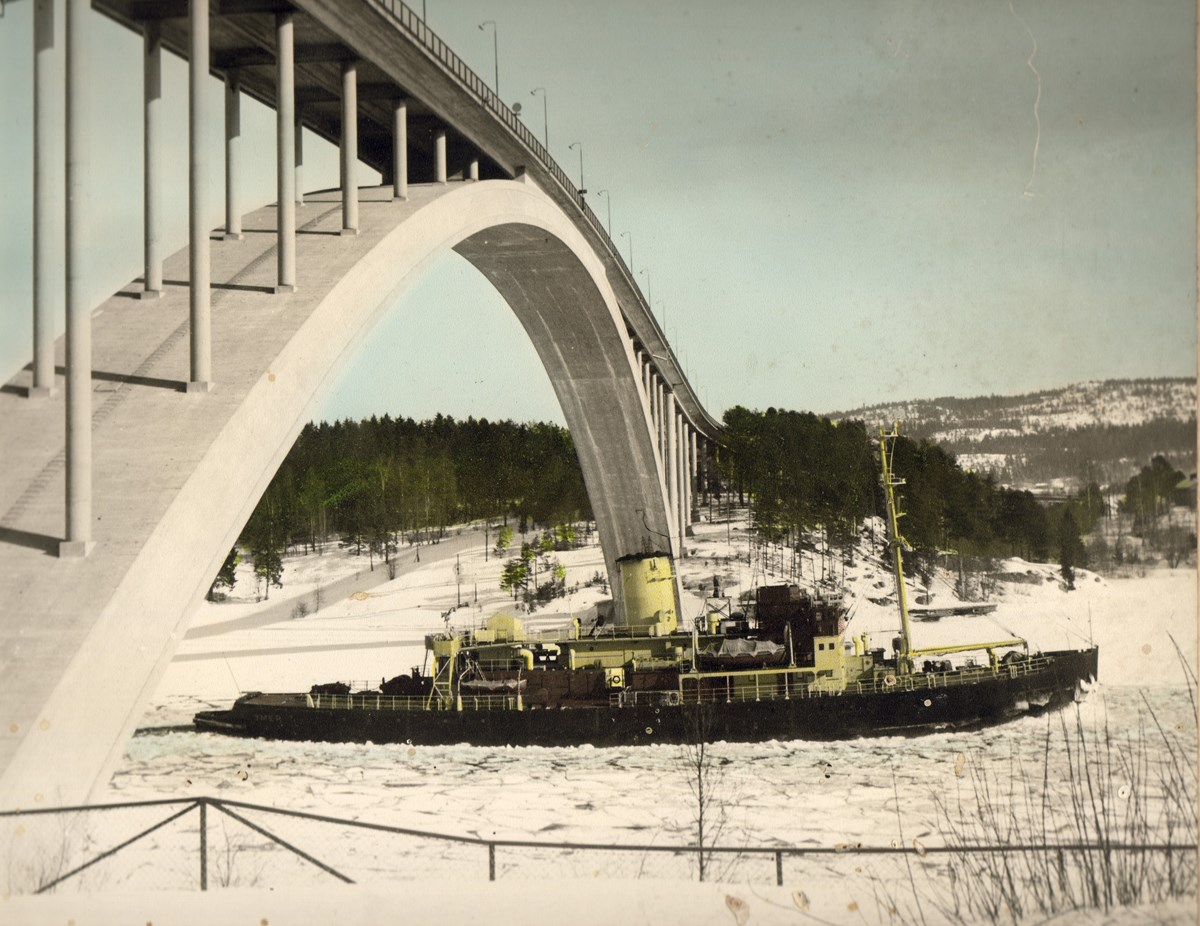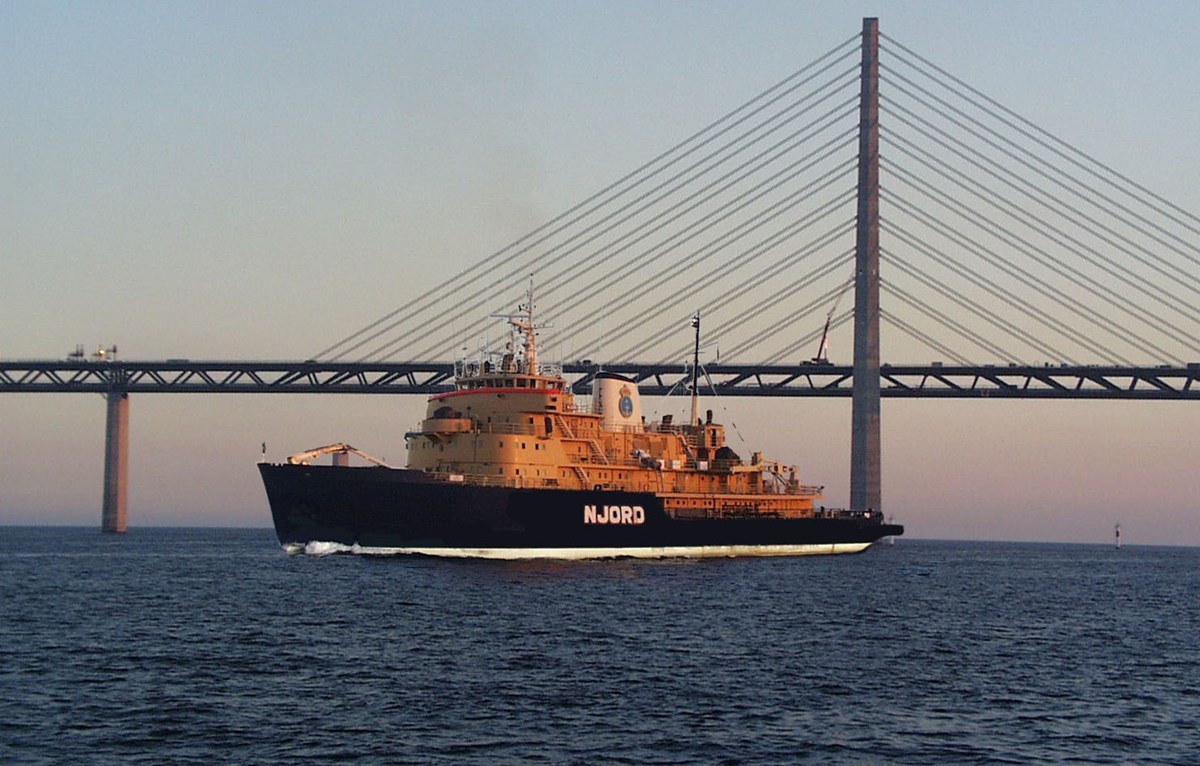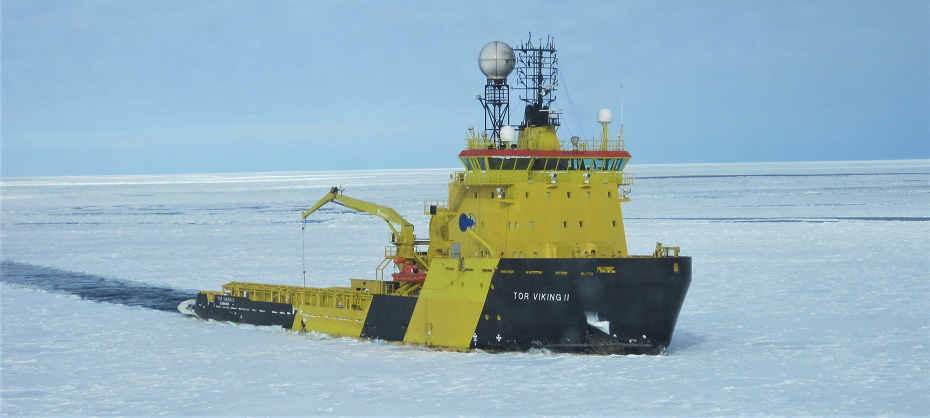The History of Nordic Icebreaking
The first sea icebreaker built for Nordic waters was delivered in 1890. The customer was the Finnish state and the ship was christened Murtaja (“The Breaker”). In 1897, the City of Stockholm bought Isbrytaren I (“Icebreaker I”).
The Icebreaker and Sankt Erik - pioneers in Sweden
The first sea icebreaker built for Nordic waters was delivered by the Finnboda Shipyard in 1890. The customer was the Finnish state and the ship was christened Murtaja (“The Breaker”). In 1897, the City of Stockholm bought Isbrytaren I (“Icebreaker I”), but the vessel was not particularly suitable for icebreaking at sea. Isbrytaren II, later rechristened Sankt Erik (“Saint Eric”) was built in 1915. The ship was to be used to facilitate winter navigation to Stockholm until the 70s.
The Swedish state rented the Sankt Erik to break ice at sea on several occasions during its 62 years in operation. She was used for icebreaking outside Stockholm for the first time in January 1916, when she assisted a few steamships that had frozen in Gävle, thus making a pioneering contribution to winter navigation in Norrland. The Sankt Erik is now a museum ship in Stockholm.

Atle I - a Swedish pioneer
The first state-owned icebreaker was delivered in 1926. First called "Statsisbrytaren” (“The State Icebreaker”), the ship was renamed after only three years and was thereafter called Atle. She had a steam engine and a propeller at every stem.

Ymer (I)
Ymer, the world’s first icebreaker with a diesel electric engine, was delivered in 1932. Most modern icebreakers still have that type of engine. Once Ymer was in operation, some winter navigation was possible although the northern ports still had to be closed and efforts in the height of winter had to be concentrated on keeping the major ports in the Baltic Sea open.
In especially severe winters, the best that could be accomplished was to keep traffic going along the south and west coasts. But it was at any rate possible to extend the shipping season in early winter and to open the ports in the Baltic and the northern Gulf of Bothnia earlier in the springtime.

Ports open all year
Kockums delivered Thule in 1953 and the Wärtsila Shipyard in Finland delivered Oden in 1957, Tor in 1964 and Njord in 1969. Sweden had thus acquired the resources to keep the ports in the northern Gulf of Bothnia open during all mild and normal ice winters, but it was still hard to manage the severe winters when the entire Gulf of Bothnia and parts of the Baltic Sea were covered with ice. New resources were needed to achieve the goal of “year-round navigation” in all important ports.
A decision was taken to procure three large icebreakers. Atle came in 1974 and was followed by Frej in 1975 and Ymer in 1977. All three vessels were built by Wärtsilä, which had previously delivered Ale (1973), which was built to make winter navigation possible on Lake Vänern.
Oden was built by the Götaverken Shipyard and delivered in 1988. Oden received global attention in 1991 when she became the first western surface-going ship to reach the North Pole.

Chartered icebreakers
A new era began when Tor and Njord were to be replaced. The new vessels Tor Viking II, Balder Viking and Vidar Viking were offshore vessels and operated in the North Sea until such time that conditions were beyond the capacity of the basic resources.
Last updated 2021-02-23